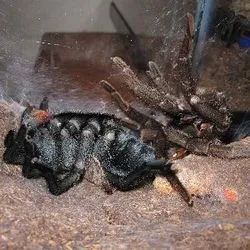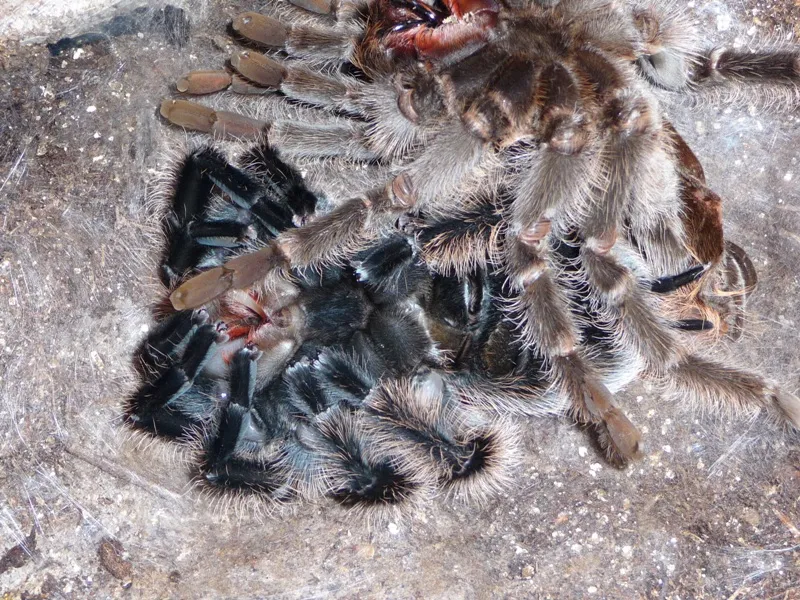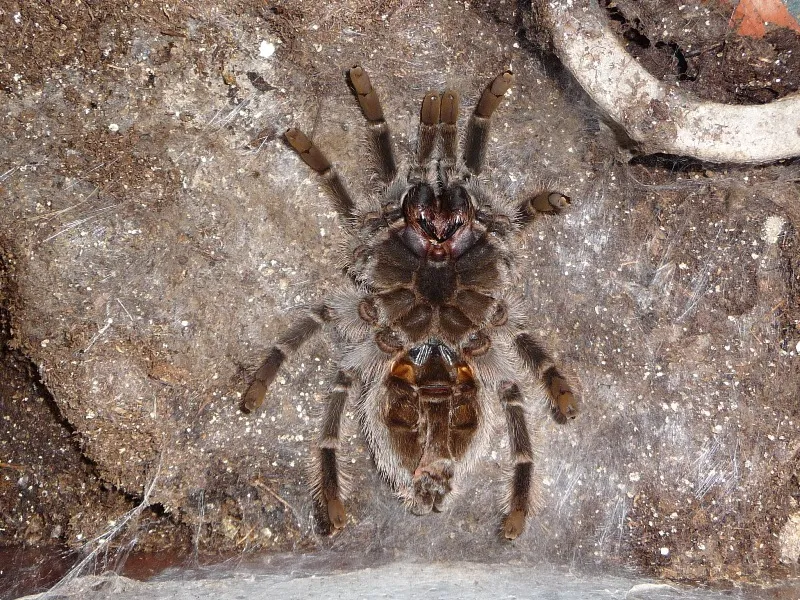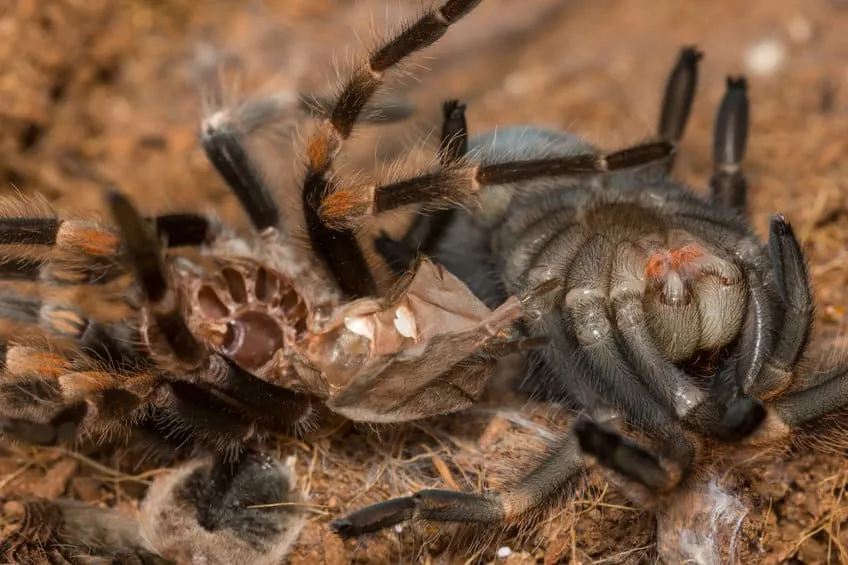What is Tarantula Molting
Tarantula molting is a natural and essential process for tarantulas, similar to how snakes shed their skin. It’s how these fascinating creatures grow and replace their old exoskeletons with new, larger ones. The exoskeleton, or outer shell, doesn’t grow, so the tarantula must shed it periodically. This process allows the tarantula to increase in size, repair injuries, and rid itself of parasites. Understanding tarantula molting is crucial for any tarantula owner, as it can be a stressful period for the spider, and knowing what to expect and how to help can ensure the tarantula’s health and well-being.
The Molting Process Explained
Molting is a complex physiological process. Before molting, the tarantula’s body begins to produce a new exoskeleton beneath the old one. The old exoskeleton then separates from the new one. The tarantula will typically lie on its back during the molt, a vulnerable position. Using pressure, it pushes and squirms to break free of the old exoskeleton. The process can take anywhere from a few minutes to several hours, depending on the size and age of the tarantula. Once the old exoskeleton is shed, the tarantula is left with a soft, vulnerable new exoskeleton that will harden over the next few days.
Pre-Molting Signs to Watch For

Recognizing the signs of an impending molt is crucial for providing the appropriate care. Several telltale signs indicate that your tarantula is preparing to molt. Knowing these signs helps you prepare and minimize stress for your tarantula. For new tarantula owners, observing these signs are essential to avoid unnecessary stress. These signs are usually observed a few weeks or months before the actual molt.
Changes in Appearance and Behavior
One of the first signs is often a change in appearance. The tarantula’s abdomen may appear darker or more translucent, and the colors might become more vibrant. Its appetite will likely decrease or stop altogether. The tarantula may also become less active, spending more time in its burrow or hiding place. Furthermore, you might notice the tarantula starting to create a web mat, which is often a sign that it is preparing for the molting process. Also, the old exoskeleton may be seen in the enclosure with hairs or any other body part.
How to Prepare for Your Tarantula’s Molt
Preparing for your tarantula’s molt is essential for minimizing stress and ensuring a successful process. The goal is to create an environment that is as safe and comfortable as possible. Avoid disturbing the tarantula during this period as this can lead to injury. Here’s how to prepare.
Creating the Right Environment

Ensure the enclosure is clean and free of any potential hazards. Remove any uneaten prey items, as they could disturb the tarantula. Providing a water dish is important, even if the tarantula isn’t drinking regularly. You should provide a hide, which will help the tarantula feel secure. Make sure the substrate is appropriate for the species, as this will help it successfully molt. Don’t handle the tarantula during the pre-molt phase, as the exoskeleton starts to loosen, and it is very vulnerable.
Humidity and Temperature Control
Maintaining the correct humidity and temperature levels is crucial for a successful molt. Research the specific needs of your tarantula species. Use a hygrometer to monitor the humidity levels and adjust as needed. Misting the enclosure or using a substrate that retains moisture can help. Maintaining the correct temperature is just as important. Use a heat lamp or mat if necessary, but avoid overheating the enclosure. A stable environment will make it easier for your tarantula to molt.
The Molting Stage What Happens During the Process
During the actual molting process, the tarantula will often lie on its back. Avoid disturbing the tarantula during this vulnerable time. The process can take anywhere from a few minutes to several hours. If the tarantula is struggling, do not intervene, as this could cause more harm than good. It’s important to remain patient. The tarantula will eventually free itself from the old exoskeleton. Once the old exoskeleton is shed, the tarantula will appear pale and soft. The new exoskeleton will gradually harden over the next few days, as the tarantula’s body expands.
Post-Molting Care and Recovery

After molting, the tarantula’s exoskeleton is soft and vulnerable. Providing the right care during the recovery period is crucial for its health. Avoid handling the tarantula for at least a week or two, or until its fangs have fully hardened. The spider’s fangs must be hard enough to eat and also to defend itself. Make sure the enclosure is clean and has fresh water available. Your tarantula may or may not be hungry immediately after molting.
Feeding Your Tarantula After Molting
Wait a few days before offering food to your tarantula. This will allow the new exoskeleton to harden. Start with smaller prey items, such as small crickets or mealworms. Overfeeding can stress the tarantula, so avoid offering too much food at once. Watch for the tarantula’s eating behavior. If it refuses food, it might still be recovering or not hungry. Be patient and continue to provide water and maintain a stable environment.
Handling Considerations
Avoid handling the tarantula for at least a week or two after molting, or until you observe the fangs are hardened. The new exoskeleton is still soft and susceptible to injury. When the tarantula is ready to be handled, do so with extreme caution. Always be gentle and avoid sudden movements, as this could startle the tarantula. Always handle tarantulas on a soft surface, and avoid doing so if they exhibit aggressive behavior. Frequent handling can cause stress.
Common Molting Issues and Solutions

While molting is a natural process, several issues can arise. Being aware of these potential problems and knowing how to address them is essential for any tarantula owner. Early detection and appropriate responses are key to preventing serious complications. Some of these issues include stuck molts, damaged limbs, or failure to molt.
Stuck Molts Causes and Remedies
A stuck molt occurs when the tarantula cannot fully shed its old exoskeleton. This can be due to low humidity, a poor environment, or underlying health issues. If a portion of the exoskeleton is stuck, you can try gently misting the area to help soften the old shell. If the molt is extensive, it is best to seek advice from an experienced tarantula keeper or a veterinarian. Avoid pulling or forcing the tarantula out of its old exoskeleton, as this can cause severe injury.
Dying During Molting
Unfortunately, tarantulas can sometimes die during the molting process. This can happen for various reasons, including underlying health issues, old age, or complications during the molt. If your tarantula dies during molting, it is important to examine the body to understand the cause of death. A vet can also examine the body and offer insight as to why the tarantula died. Maintaining a healthy environment, providing proper care, and addressing any health concerns will increase the chances of a successful molt.
Conclusion

Tarantula molting is a fascinating and crucial aspect of tarantula care. By understanding the molting process, recognizing the pre-molting signs, and providing the proper care, you can ensure your tarantula’s health and well-being. Creating a safe and stable environment, avoiding disturbances, and offering appropriate care after the molt will help your tarantula thrive. Remember to always research the specific needs of your tarantula species and seek advice from experienced keepers when needed. With proper knowledge and care, you can enjoy the unique experience of owning and caring for these amazing creatures. Caring for your tarantula is a rewarding experience, so enjoy the process and your amazing pet.
